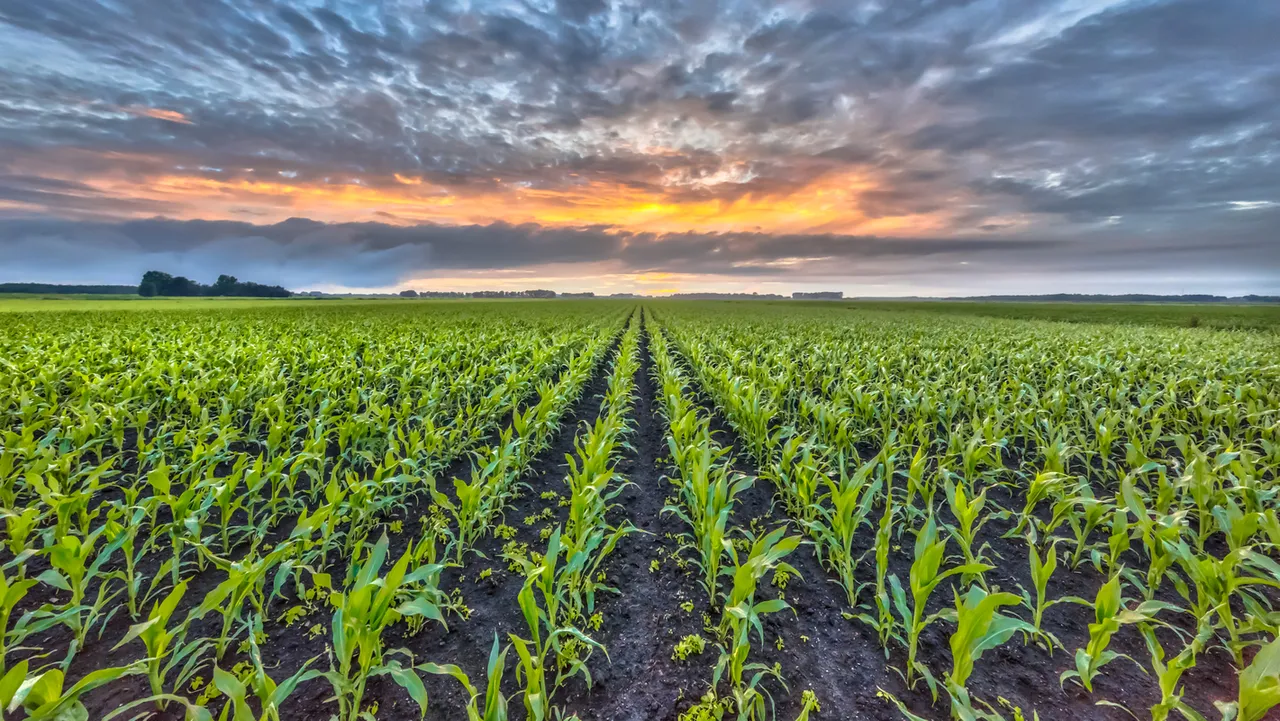
The word "crop" has several related meanings. They can be as follows:
- A plant or animal product that is grown and harvested extensively for profit or subsistence, such as wheat, corn, or wool. This is the most common usage of the term in an agricultural context.
- The total yield or production of a particular agricultural product in a given season or area. For example, "the corn crop was especially large this year."
- A group or collection of people or things that appear or occur together, often used informally. For example, "a new crop of students" or "the current crop of horror movies."
- The pouch or enlargement of the esophagus in birds and some other animals where food is stored before digestion. This is also called a "craw."
- The handle or stock of a whip, especially a short riding crop used for horses.
- A close-cropped hairstyle where the hair is cut short.
The most common use is to refer to a plant or animal product that is grown and harvested.
Harvesting and Processing
The process of harvesting and processing crops can vary depending on the type of crop and the specific methods used by farmers and agricultural operations. However, here is a general overview of how crops are typically harvested and processed:
- Harvesting: The first step in the crop harvesting process is to harvest the crops from the fields. This is typically done using large, specialized machinery such as combine harvesters, which can cut, thresh, and clean the crops ALL in one pass. The crops are then loaded onto trucks or other transport vehicles and taken to the processing facility.
- Cleaning and Sorting: Once the crops arrive at the processing facility, they are cleaned and sorted to remove any impurities, such as dirt, rocks, or other debris. This is typically done using a series of screens, shakers, and other equipment that can separate the crops from the impurities.
- Processing: After the crops have been cleaned and sorted, they are processed according to their intended use. For example, grains may be milled into flour, while fruits and vegetables may be washed, cut, and packaged for sale in grocery stores or restaurants.
- Drying and Storage: In some cases, crops may need to be dried before they can be processed. This is typically done using large, industrial-scale dryers that can quickly and efficiently remove moisture from the crops. Once the crops have been dried, they are stored in silos, warehouses, or other storage facilities until they are needed for processing.
- Packaging and Distribution: Finally, the processed crops are packaged and distributed to customers. This may involve loading the crops onto pallets, shrink-wrapping them, and loading them onto trucks or trains for transport. The crops may be sold to wholesalers, retailers, or directly to consumers, depending on the product and the market.
Overall, the process of harvesting and processing crops is a complex and often highly mechanized process that requires careful planning, coordination, and attention to detail. By optimizing their harvesting and processing operations, farmers and agricultural operations can maximize their yields, reduce waste, and improve the quality of their products.
Most Popular Crops
There are many different crops grown throughout the world, and the most popular ones can vary depending on factors such as climate, soil conditions, and market demand. However, here are some of the most widely grown crops worldwide:
- Wheat: Wheat is one of the most widely grown crops in the world, and is a staple food for millions of people around the globe. It is grown in many different regions, including North and South America, Europe, Asia, and Australia.
- Corn (Maize): Corn is another widely grown crop that is used for a variety of purposes, including food, feed, and fuel. It is grown in many different regions, including North and South America, Europe, and Asia.
- Rice: Rice is a staple food for more than half of the world's population, and is grown in many different regions, including Asia, Africa, and South America.
- Soybeans: Soybeans are a versatile crop that is used for a variety of purposes, including food, feed, and biofuels. They are grown in many different regions, including North and South America, Asia, and Africa.
- Sugar Cane: Sugar cane is a major crop that is grown primarily for the production of sugar and other sweeteners. It is grown in many different regions, including South and Central America, Asia, and Africa.
- Cotton: Cotton is a major crop that is grown primarily for the production of textiles and other fiber products. It is grown in many different regions, including the United States, China, India, and Pakistan.
- Potatoes: Potatoes are a widely grown crop that is used for a variety of purposes, including food, feed, and industrial products. They are grown in many different regions, including North and South America, Europe, and Asia.
- Cassava: Cassava is a staple food for millions of people in Africa, Asia, and Latin America. It is a hardy crop that can be grown in a variety of soil and climate conditions.
- Barley: Barley is a major crop that is used for a variety of purposes, including food, feed, and brewing. It is grown in many different regions, including Europe, Asia, and North America.
- Sunflowers: Sunflowers are a major crop that is grown primarily for the production of oil and seeds. They are grown in many different regions, including the United States, Russia, and Ukraine.
These are just a few of the many crops that are grown throughout the world. The specific crops grown in any given region will depend on a variety of factors, including climate, soil conditions, and market demand.
